Drop Your Block Here
Drop Your Block Here

Wastewater Improvements Project

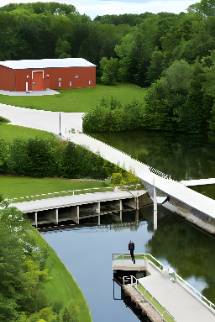
Drop Your Block Here
Early Wastewater History
A comprehensive plan developed in 1974 called for the construction of collection facilities and a treatment plant, with the expectation of financing from federal and state grants. The estimated cost of the sewer system was $1.5 million, with 60% to be funded by grants and the rest by a revenue bond issue. However, the plan was ultimately abandoned due to the cessation of grant funding and concerns about the location of the treatment plant and its financial burden on taxpayers.
Over the years, there have been several studies done on the feasibility of a public sewer system in the Village of Cambridge. One such study, conducted by Morrell Vrooman Engineers in the late 1960s, recommended the construction of a collection system serving many residential users and other types of uses, with a secondary treatment plant. The 1974 comprehensive plan suggested that public sewers should eventually serve the entire built-up area of the village.
Despite the past efforts, a public sewer system has yet to be established in Cambridge. Concerns about the financial burden on taxpayers, the responsibility for maintenance, and equity issues continue to be a challenge.
Wastewater Improvements Timeline
2015:
- Mayor Reagan, Mayor-elect Bogle, and Trustee Kelly met with the Laberge Group to discuss the village's wastewater needs.
- Competing proposals from Laberge Group and Adirondack Mountain Engineering were considered for preparing a grant request for wastewater treatment improvements.
- Trustee Kelly made a motion to approve Laberge Group to prepare the grant application, which was seconded by Trustee Robertson and passed unanimously.
- September: the grant request for the wastewater treatment was submitted by Laberge.
- The village was not a regional priority for the funding requested, but the Mayor promised to continue seeking other avenues for funding.
2016:
- February: the Mayor announced that the village was not a regional priority for the requested funding, but they would continue seeking other avenues.
- September: Both the wastewater grant request and park grant request were submitted.
2017:
- March: Mayor Bogle accepted Laberge's proposal to conduct a sewer study for the village.
- May: The Wastewater Study Project Team was established.
2018:
- March: the Mayor discussed the wastewater study and Laberge was scheduled to meet with the trustees.
- May: a public hearing was held for the 2017 Village of Cambridge Sewer Feasibility Project, with Laberge Group presenting the project report.
- July: the Mayor held a public hearing on the issue of wastewater.
- November: The Mayor held a meeting with Laberge to discuss the next steps for wastewater management.
2019:
- April: a tour of another facility was arranged for April 23, 2019, at the Darrow School in New Lebanon.
- July: a digital wastewater study was posted online for the public.
2020:
- September: the village held workshops for the EPA Recreational Economy Planning grant, which involved over 100 community members. As part of the community action plan, wastewater was identified as goal 3.6.
2021:
- January: The village lost its designation as a low/moderate income level community, which made it no longer eligible for grants.
- April: the village contracted to have an income survey performed, which was completed in July 2021.
- May: Mayor Bogle authorized a contract with Laberge Group for an update of the sewer feasibility study and proposed services.
- June: Mayor Bogle signed a contract with Laberge for the preparation of all grants, starting with the NRBC Grant paperwork.
- August: The village earned back its low/moderate income designation, which made it grant-eligible again.
- October: A special meeting was held for the SEQRA (State Environmental Quality Review Act) and financial review.
- November: A special meeting was held for the Negative Declaration of SEQRA and Bond Resolution.
2022:
- May: The village applied for a USDA grant resolution.
- September: The USDA application was submitted.
- October: A NY Forward grant public meeting was held, and attendees identified wastewater as a priority for economic development.
- The USDA regional office forwarded the application to the National office.
2015-Present Wastewater History
On July 1st, a public hearing was held for the CDBG for wastewater, with Laberge group presenting the current CDBG program. On September 2nd, the Mayor reported that the wastewater grant had been submitted by Laberge Group.
However, on February 3rd, 2016, the Mayor announced that the village was not a regional priority for the requested funding, but they would continue seeking other avenues. On September 7th, both the wastewater grant request and park grant request were submitted. On January 4th, 2017, the CFA's were released and the village would find out about the wastewater study and micro park.
On January 4th, the Board of Trustees also opened a non-interest bearing checking account for the CDBG. On February 1st, the Mayor discussed a grant received for the wastewater study, and the Board of Trustees accepted LaBerge Group's offer to conduct the sewer study. This was followed by the acceptance of LaBerge's offer on March 1st.
On March 8th, 2018, the Mayor discussed the wastewater study and LaBerge was scheduled to meet with the trustees. On May 2nd, the Mayor reported that the LaBerge sewer study report would be completed on May 9th. On May 9th, a public hearing was held for the 2017 Village of Cambridge Sewer Feasibility Project, with Laberge Group presenting the project report. The public hearing provided further information about the progress of the ongoing CDBG project and received comments related to the administration of the project.
On July 11, 2018, the Mayor held a public hearing on the issue of wastewater. The Mayor was working with Ron Laberge to determine the next step in resolving the issue. On November 7, 2018, the Mayor held a meeting with Laberge to discuss the next steps for wastewater management. The Mayor also announced that there would be more public information sessions on the issue.
In January 2019, a question from a resident was raised during the public comment period. The resident asked about the priority of current projects, to which the Mayor replied that priority is often based on the timeline of grants and that the current priority was the firehouse, followed by the wastewater issue. The Mayor also introduced the idea of holding a Town Hall meeting for the Mayor.
On April 3, 2019, the Mayor announced a Laberge wastewater information night that was held on March 12, 7 PM. During the public comment period, concerns were raised by a resident about the rumored wastewater treatment on Turnpike Road and the fact that residents outside the Village may be impacted but do not get to vote on it. The Mayor addressed these concerns by pointing out the numerous places where meetings are announced and invited the resident
On April 3, 2019, the Mayor wanted to set up a trustees’ workshop on wastewater management. During the same public comment period, Sue Van Hook encouraged the Village to proceed with the planning and treatment of wastewater. Van Hook had arranged for a tour of another wastewater facility at the Darrow School in New Lebanon on April 23, Tuesday.
In July 2019, the Mayor announced that a digital wastewater study would be posted online. On January 6, 2021, the Trustees met with Chris Callahan, Jason Dolmetsch, and Pat Smart from MSK engineering and Chris Huntzinger from the EPA to discuss wastewater management. The biggest issue raised was information sharing, cost, and implementation.
On March 3, 2021, the Mayor discussed the income survey. The Mayor suggested hiring G&G Municipal Consulting and Grant Writing for the conduct of an income survey at a cost not to exceed $7,890, contingent upon attorney approval. The Trustee Steve Hallock suggested tabling the income survey until March, as the discussions with MSK engineering regarding wastewater management would also provide information on income.
On April 7, 2021, the Trustees authorized the Mayor to sign a contract with the Laberge Group for the update of the sewer feasibility study and proposed services per the March 17, 2021 proposal, pending legal review and confirmation of funding eligibility under the American Rescue Plan.
On May 5, 2021, the Mayor announced that the authorization to sign the contract with the Laberge Group was approved. On June 2, 2021, the Trustees authorized the Mayor to sign a contract with Laberge for the preparation of all grants, including the NRBC Grant paperwork, at a cost of $3,000 plus expenses, pending review by the Village Attorney.
On August 4, 2021, the Mayor announced that the results of the income survey showed that the Village was now considered a low-to-moderate income area, with a median income of $42,000. This made the Village eligible for low-income and CDBG grants.
On October 19th, 2021, the Village of Cambridge Board of Trustees held a special meeting to discuss the Cambridge Wastewater Improvements Project. The meeting had a specific agenda focused on establishing the Village Board as the Lead Agency in accordance with the New York State Environmental Quality Review Act (SEQRA).
The board proposed the installation of a municipal wastewater collection and treatment system, which would serve residents and businesses within the Village boundary. The project was classified as a Type I action under SEQRA and the Village Board sought to declare itself as the Lead Agency for SEQR Coordinated Review. A notice of intent was circulated to all Involved and Interested Agencies, giving them 30 days to respond with any comments.
On November 3rd, 2021, the Village Board passed a motion to declare itself as the Lead Agency for the SEQR Coordinated Review of the Village wastewater project. The motion was approved with a roll call vote, with all Trustees voting in favor.
The second part of the meeting focused on the submission of a grant application for the Cambridge Wastewater Improvements Project. The village commissioned the development of a Preliminary Engineering Report to identify the necessary improvements to the wastewater system. The Mayor was authorized to apply for funding of up to 25% of the project cost through the New York State Water Infrastructure Improvement Act (NYWIIA). The program required the application to show evidence of project readiness, including a plan of finance, bond resolution, engineering report, engineering contract, and legal contract for services.
The Mayor was authorized to enter into separate agreements with the Laberge Group and legal counsel for the provision of engineering and legal services associated with the wastewater improvement project. A copy of the separate engineering and legal contract was to be submitted with the grant application to demonstrate the Village of Cambridge's support for the project. The motion to authorize the Mayor to submit the grant application was approved with a roll call vote, with all Trustees voting in favor.
On November 18th, 2021, the Board of Trustees of the Village of Cambridge held a special meeting to discuss the proposed Cambridge Wastewater Improvements Project. The purpose of the meeting was to declare the Village of Cambridge as the Lead Agency for the project, which was to install a sewage collection system and treatment facility. The meeting was called in accordance with the New York State Environmental Quality Review Act (SEQRA) and the National Environmental Protection Agency, Code of Federal Regulations.
According to the meeting resolution, the Village Board declared its intent to be the Lead Agency and considered the project to be a Type I action, as per the SEQRA regulations. The Village Board prepared a Full Environmental Assessment Form (FEAF) and notified all involved and interested agencies of its intentions. No objections were raised, and the Village Board was established as the Lead Agency.
The resolution also declared that the project would not have any significant adverse environmental impacts, as evidenced by the attached Negative Declaration. The Village Clerk was authorized to file the Negative Declaration in accordance with state law.
Additionally, the meeting also passed a bond resolution to authorize the issuance of $27 million in general obligation serial bonds or a statutory installment bond to pay for the costs of the project. The bond resolution also authorized the issuance of bond anticipation notes for the same purpose. The specific purpose of the bonds was to finance the acquisition, construction, and installation of a municipal wastewater collection and treatment system, as described in the Village of Cambridge Sewer Feasibility Study.
On February 2, 2022, the Mayor proposed a resolution to apply for the Community Development Block Grant (CDBG) for wastewater. The resolution was passed by the Village Board, and a public hearing was held on March 2, 2022, to obtain the views of the citizens on community development needs.
Following the public hearing, on May 4, 2022, the Mayor proposed another resolution, this time to apply for funding under the USDA Rural Development Water & Environmental Programs. The purpose of the grant is to provide funding for the construction of water and waste facilities in rural communities. The Mayor was authorized to apply for the grant and to act as the Authorized Representative in connection with the application, providing additional information and executing any contracts or agreements necessary. Both resolutions were passed by the Village Board, with all members voting in favor.
Lorem Ipsum is simply dummy text of the printing?
Lorem Ipsum is simply dummy text of the printing and typesetting industry. Lorem Ipsum has been the industry's standard dummy text ever since the 1500s, when.
Lorem Ipsum is simply dummy text of the printing?
Lorem Ipsum is simply dummy text of the printing and typesetting industry. Lorem Ipsum has been the industry's standard dummy text ever since the 1500s, when.
Lorem Ipsum is simply dummy text of the printing?
Lorem Ipsum is simply dummy text of the printing and typesetting industry. Lorem Ipsum has been the industry's standard dummy text ever since the 1500s, when.
Lorem Ipsum is simply dummy text of the printing?
Lorem Ipsum is simply dummy text of the printing and typesetting industry. Lorem Ipsum has been the industry's standard dummy text ever since the 1500s, when.
Lorem Ipsum is simply dummy text of the printing?
Lorem Ipsum is simply dummy text of the printing and typesetting industry. Lorem Ipsum has been the industry's standard dummy text ever since the 1500s, when.
Lorem Ipsum is simply dummy text of the printing?
Lorem Ipsum is simply dummy text of the printing and typesetting industry. Lorem Ipsum has been the industry's standard dummy text ever since the 1500s, when.
Lorem Ipsum is simply dummy text of the printing?
Lorem Ipsum is simply dummy text of the printing and typesetting industry. Lorem Ipsum has been the industry's standard dummy text ever since the 1500s, when.
How Did We Get Here?
So, this has been a long time in planning, what has happened over the past 5-7 years to move this project forward and what public meetings were held on the subject?
What is a low pressure sewer system?
What is the Estimated Project Cost?
What Funding Has Been Secured?
What other funding is available to help reduce the cost further?
How is the cost to a homeowner determined?
The cost to a single-family dwelling is determined by dividing the annual budgeted operation and maintenance expense for a given year to operate the system by the number Equivalent Dwelling Units (EDUs) in the Village. Unlike the loan repayment, this amount will vary from year to year. over the course of the loan.
What’s the difference between loan repayment costs and operating costs of public sanitary sewers?
How will residents be billed for municipal sewer
Where will the WWTP be located?
How long will the project take to complete?
Do I have to hook up?
Who will be responsible for the grinder pump purchase and installation?
Who will be responsible to maintain the grinder pump?
How much does it cost to operate a grinder pump?
Who is responsible for the decommissioning of my septic, installation of the sewer laterals, and connection?
What is a Bond Resolution?
What is a permissive referendum
If a resident did not attend the board meeting at which a bond resolution was adopted, how would they even know that they could petition to have a referendum on it?
Lorem Ipsum is simply dummy text of the printing?
Lorem Ipsum is simply dummy text of the printing and typesetting industry. Lorem Ipsum has been the industry's standard dummy text ever since the 1500s, when.
Drop Your Block Here
As one of the leading consulting firms in the region, the Laberge Group brings a wealth of experience and expertise to the project, and we are confident that they will deliver a high-quality solution that meets the needs of our community.
For those who may not be familiar with the Laberge Group, they are a full-service consulting firm that offers planning, engineering, and project management services to municipalities, government agencies, and private organizations. Their team of professionals has a proven track record of delivering successful projects in various fields, including water resources, transportation, and community development.
To learn more about the Laberge Group and their approach to the Wastewater Improvements Project, we encourage you to visit their website at labergegroup.com. There, you will find detailed information on their services, past projects, and the team of experts who will be working on our project.
Visit Laberge Group
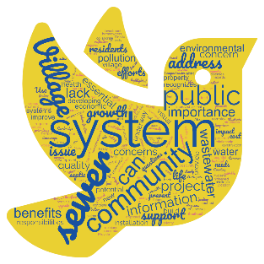
The board passed a resolution to classify the project as a Type I action under the SEQRA standards, with the intention of declaring themselves as lead agency for the coordinated review of the action. The board also directed the coordination of intent for lead agency designation with all involved agencies through the service of a notice of intent.
In addition, the board passed a resolution authorizing the Mayor to develop and submit an application for funding for up to 25% of the project cost through the New York State Water Infrastructure Improvement Act (NYWIIA). The application requires evidence of project readiness, including a plan of finance and bond resolution, engineering report, engineering contract, and legal contract for services. Upon award of the NYWIIA grant, the Mayor is authorized to enter into separate agreements with the Laberge Group and legal counsel for the provision of engineering and legal services associated with the wastewater improvement project.
View The Lead Agency Declaration
The board evaluated the project's environmental impact and determined that it will not have any significant adverse environmental impacts. The board also authorized the village clerk to file the negative declaration in accordance with the applicable provisions of state law.
In addition, the board authorized the issuance of general obligation serial bonds or a statutory installment bond, in lieu of serial bonds, in the aggregate principal amount not to exceed $27,000,000. The bonds will be used to finance the acquisition, construction, and installation of a municipal wastewater collection and treatment system.
View The Negative Declaration
EAs consider a range of factors and provide information on the environmental consequences of proposed actions, including any possible mitigation measures.
Public feedback is important during the EA process.
If a proposed action is found to have significant environmental impacts, the USDA may be required to conduct an Environmental Impact Statement (EIS).
The goal of an EA is to ensure that the USDA makes well-informed decisions that balance economic, social, and environmental impacts and promote sustainable agriculture and rural development while protecting our natural resources for future generations.
2022 USDA Environmental Assessment
Similarly, the lack of a village sewer system is an issue for homeowners as small housing lots in the traditional community are not suited for individual septic systems. The privately-owned water system also does not serve all residents in the village, many of whom rely on wells for drinking water. To address these concerns, the comprehensive plan suggests that the village work on developing a public sewer system and upgrade the water system in collaboration with the water company.
The comprehensive plan also recognizes the significance of sewer and water infrastructure in promoting economic growth and attracting businesses to the area. The lack of a public sewer system limits potential economic growth in the village, hence the plan recommends the development of a public sewer system as a priority.
The industrial district in the village has room for growth and low-impact industrial activities are desired due to the close proximity to residential and commercial areas.
The 2004 Comprehensive Plan recognizes the importance of sewer and water infrastructure in shaping the future of the Village of Cambridge. The plan recommends the development of a public sewer system as a priority action and the upgrading of the water system to support economic growth and improve the quality of life for residents.
View The 2004 Comprehensive Plan
This community action plan focuses on regional connectivity, including wastewater management.
Participants engaged in brainstorming sessions to identify potential actions to advance goals, followed by prioritization and flushing out details of the top actions.
Action 3.6 involves working with neighbors to address the need for wastewater treatment, while Action 4.1 focuses on creating a regional wastewater system through collaboration with neighboring municipalities.
This plan is crucial for public health and the growth of local businesses, and will help align regional priorities and leverage unique outdoor recreation amenities.
View the RERC Action Plan
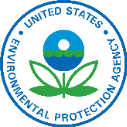

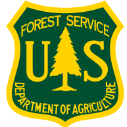

Drop Your Block Here
© 2025 Village of Cambridge New York All Rights Reserved. 56 N Park St, Cambridge, NY 12816 . Contact Us . Terms of Service . Privacy Policy
Drop Your Block Here


